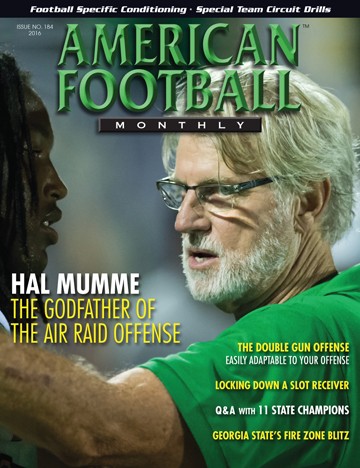Article CategoriesAFM Magazine
|
Leadership Strategies: How to Develop a Steady Stream of ‘Championship Level QBs in Your Program, Part Iby: Eric SmithDirector and Coach, Winning Edge Skills © More from this issue There is not much argument in any level of football that to win consistently and compete for championships you need strong quarterback play. So what defines ‘strong quarterback play’ and how do you develop that consistently within an organization? This series of articles will lay out a clear path that can easily be followed in any program given the proper attention. Let’s first discuss what goes into the makings of a great quarterback. From there, you’ll be in a better position to choose who to invest your time into and how to develop them year after year so that the success of your program can become predictable. In January 2008, Geoffrey Colvin published a fascinating book which every football coach in America would benefit from reading called – ‘Talent is Overrated: What Really Separates World....The full article can only be seen by subscribers.
|
|
|||||||
| HOME |
MAGAZINE |
SUBSCRIBE | ONLINE COLUMNISTS | COACHING VIDEOS |
Copyright 2025, AmericanFootballMonthly.com
All Rights Reserved





